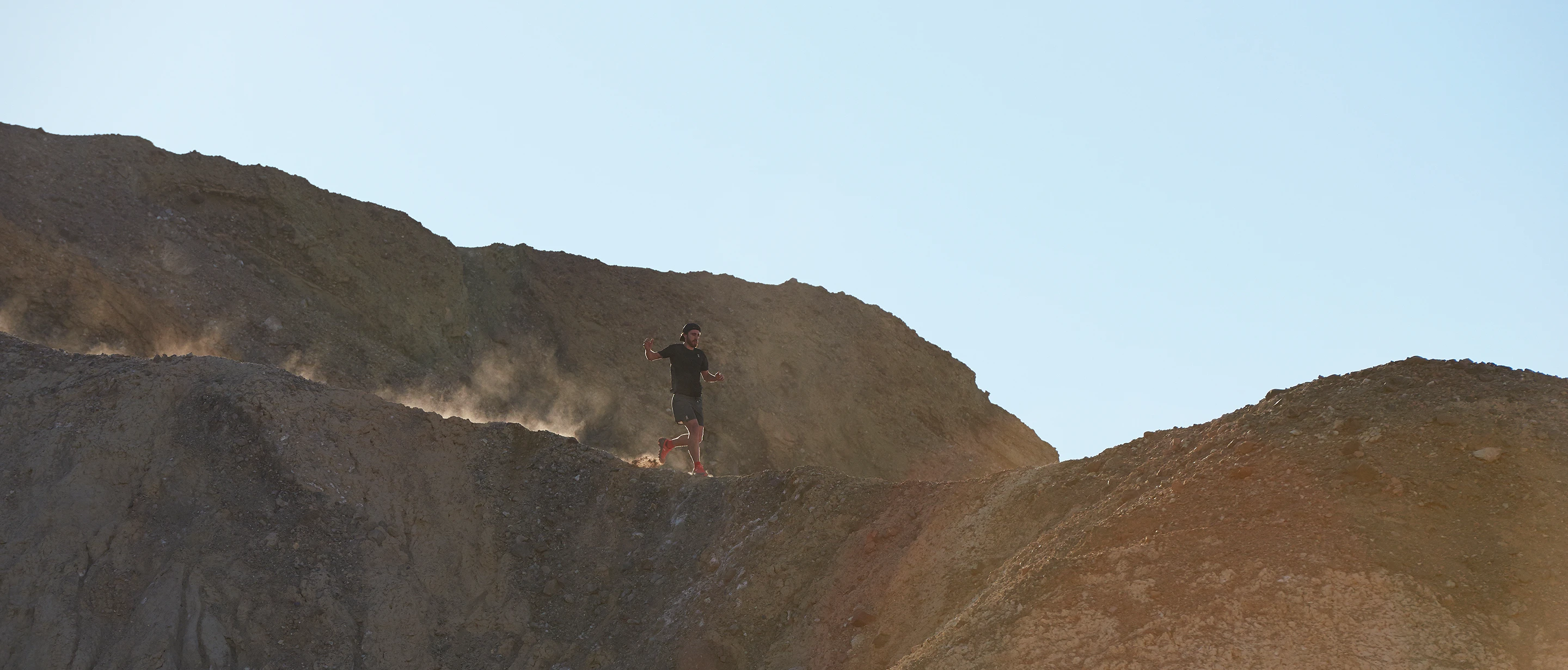

The Southwestern states of the US have something for every runner. Desert trails, endless roads, urban adventure. From Death Valley to Palm Springs, we took a road trip to run it all. Consider this a virtual postcard, with advice for following in our footsteps.
Don’t let the intimidating name deter you. With proper planning and a few precautions, Death Valley is an awesome place to run, especially if you like to head off road.
The Golden Canyon Trailhead is a good place to start. The trails have a low technical difficulty and in around 10 kilometers you can be at the mesmerizing rock formations around Zabriskie Point.
Be sure to check out the Badwater Basin. The starting point for the infamous Badwater 135 ultramarathon, a run here gives you a taste of “The World's Toughest Foot Race”. If the legs still have it in them, a climb up to Dante’s View is worth it for the panorama across the valley.
Carrying sun protection and water are a must. The temperature for runners is best between November and March. After that, Death Valley averages rise to 90°F (32°C), peaking at a scorching 117°F (47°C) in July.
Keeping the temperature high, we headed to Valley of Fire Park. Here, long roads crossing an almost Martian sandstone landscape seem to disappear into infinity. This is a place where you can burn through some serious miles on asphalt. ‘Burn’ being the operative word, the usual caveats apply – take sun protection and water with you at all times. Also, stay on the shoulder. The roads are quiet, but vigilance for vehicles is paramount.
Just like in Death Valley, more adventure awaits those that head off the beaten path. The Trail Run Project has mapped out some epic running routes on Valley of Fire Trails. Be aware though, that these are unmarked and cover tough terrain. Add in the desert conditions and they’re recommended only for seasoned trail runners.
If you’re in the Valley of Fire, you have to experience the Fire Wave Trail. Just a 1.5-mile round trip (2.4km), it’s great for a post-run shake-out stroll. Anything this trail lacks in distance, it makes up for in aesthetics. The striped sandstone formations are something else.
Time for some runner’s R&R in the Coachella Valley. A center for sports, the desert resort town is an athlete’s paradise outside of the sweltering summer months.
The go-to road run for Palm Springs runners is along Palm Canyon Drive. A 6.5-mile (10.5km) flat yet scenic stretch between the city and the Agua Caliente Indian Reservation, you can run the Drive out-and-back to whatever distance you desire. On the way, look out for local landmarks like the Historic Tennis Club and the Palm Springs Art Museum.
If you’re up for some serious elevation, head to the Skyline Trail. The Skyline is the first section of the Cactus to Clouds Trail, which runs 16 miles (26km) from Palm Springs all the way up to the 10,834 feet (3,302m) San Jacinto Peak. Starting at around 490 feet (150m) above sea level, the elevation gain of roughly 10,300 feet (3,100 m) over that distance makes this one of the steepest trails in the world. Maybe best to think of it as a hiking, rather than running route.
For those that prefer to look inward rather than upward, Palm Springs is practically overflowing with yoga studios – ideal for some always-needed mindful mobility training.
A site to discover rather than run, Salvation Mountain is one of a kind. Effectively a huge art installation, it was created by a local resident, Leonard Knight, from a mix of adobe, straw and lead-free paint.
Combining colorful mural-like visuals with religious verses, it’s a thought-provoking place to explore. Since Leonard Knight passed away in 2014, the giant sculptures have been maintained by a dedicated charity and support from volunteers.
Salvation Mountain offers plenty of positivity to take into your next challenge. For us, that was some speed work in the City of Angels.
Final stop, L.A. – where runners are spoiled for choice. This is an urban jungle so expansive that you know you’ll test yourself way before you reach the city limits.
One example of the seemingly endless choice for runners is the Strand. Following the coast from Torrance County Beach to Will Rogers State beach, it offers over 22 miles (35 km) of flat road and sea air. Passing landmarks like the Santa Monica Pier and Venice Beach, it’s the most rewarding way to see the sights.
For a taste of trail running without heading back to the mountains, the appropriately named Runyon Canyon trail offers a fun but busy 2.5-mile (4 km) loop and a view of the Hollywood sign.
Alternatively, if you want to go really long, Griffith Park is an endurance paradise. The second-largest urban park in the US, its 35 trails offer a combined 53 miles (85 km) of dirt tracks. We almost had to extend our stay…
Another tip, for running and exploring is Silver Lake. Soak up the creative vibe with an urban run or head to the reservoir of the same name, where there’s a nice 2.2-mile (3.5 km) loop. Whether you go easy or intervals is up to you. Either way, recharge in one of the area’s achingly cool coffee stops.
The best thing about running in L.A? You never have to stop. A 24/7 city means you can light things up with a pace session any time of day or night. Perfect for stretching the legs before a red eye back to Switzerland…